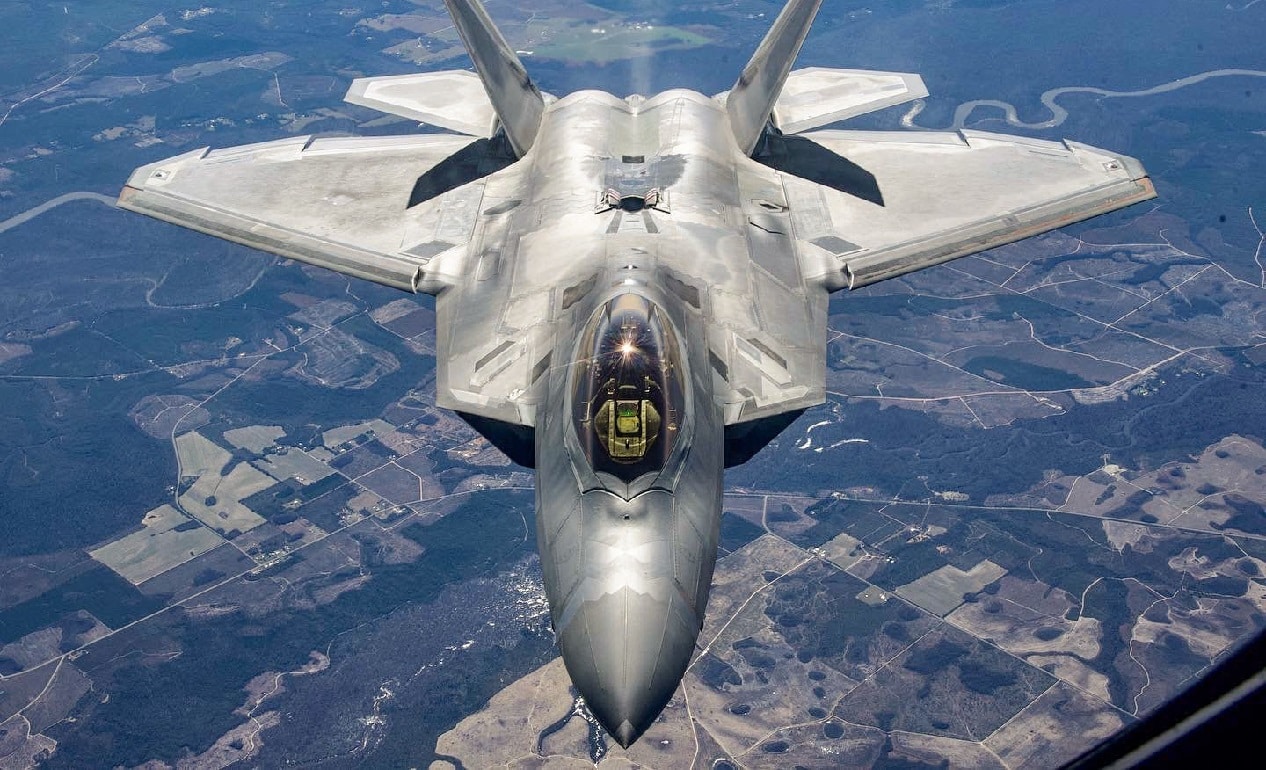U.S.-Russian tensions have escalated over Syria after several Su-35 fighter jets flew “dangerously” close to several US F-16s in what was a breach of established safety protocol between the two countries.
The long-established protocol is naturally designed to prevent miscommunication or conflict between the two countries, both of which are operating in the same airspace.
While specifics related to operational decisions are often withheld for security reasons, the Pentagon’s decision to send F-22s to the Middle East may be a response to increased U.S.-Russian tensions over shared airspace.
F-22 to Deter Russia
A statement from U.S. Central Command was quite specific about the rationale for sending F-22s, indicating that the decision was in large measure a response to what the statement referred to as “unprofessional” and “provocative” behavior.
Several U.S. Air Force videos released in April show two Russian Su-35s veering dangerously close to US F-16s. The incidents were caught on camera by F-16 cameras. When discussing the incident on NBC news, Lt. Gen. Alexus Grynkewich, Combined Forces Air Component Commander for U.S. Central Command, said Russian planes dangerously came within 500 feet of U.S. F-16 aircraft. This is a direct and flagrant violation of existing rules and protocols, which specify a need for “miles wide” deconfliction zones, according to a report in the Air Force Times, which also says U.S. and Russian air commanders share a “hotline” to discuss and avoid miscalculations.
A CentCom statement reinforces this assessment, explaining that Russian behavior greatly increases risks and the possibility of miscalculation.
Russian Aggression
“Russian Forces’ unsafe and unprofessional behavior is not what we expect from a professional air force. Their regular violation of agreed upon airspace deconfliction measures increases the risk of escalation or miscalculation,” Gen. Michael “Erik” Kurilla, commander of U.S. Central Command, said in the CentCom statement. “Alongside our partners and allies, we are committed to improving the security and stability in the region.”
While specifics related to intent can be difficult to discern, many news reports have raised a question as to whether the provocations are related to Russia’s connection to Iran. Iran has reportedly been supplying drones to Russia to support its war effort against Ukraine. An interesting article from Maya Carlin in 19FortyFive says Tehran has become a leading supplier of unmanned combat systems to Russia during the Ukraine war, a fact that may help explain why Russia appears to be showing greater solidarity with Iran.
The provocative maneuvers with Russian Su-35s do appear quite serious, as Su-35s are among Russia’s most advanced and highly upgraded 4th-generation ++++ aircraft. Building upon the Su-27 and Su-30, the Russian Su-35 is described in the Russian press as a “heavily upgraded,” “maneuverable” multi-purpose fighter with many 5th-gen-like attributes. A Russian TASS News agency report says the Su-35 was developed on the “basis of 5th-generation technologies.” This includes new avionics, radar, and what TASS refers to as “plasma ignition engines” to increase thrust vectoring. This technology, according to TASS, reportedly gives the Su-35 an F-22-like ability to achieve supersonic speeds without needing afterburner.
Kris Osborn is the Military Affairs Editor of 19FortyFive and President of Warrior Maven – Center for Military Modernization. Osborn previously served at the Pentagon as a Highly Qualified Expert with the Office of the Assistant Secretary of the Army—Acquisition, Logistics & Technology. Osborn has also worked as an anchor and on-air military specialist at national TV networks. He has appeared as a guest military expert on Fox News, MSNBC, The Military Channel, and The History Channel. He also has a Masters Degree in Comparative Literature from Columbia University.
From 19FortyFive
A Russian Submarine Accidently ‘Destroyed Itself’
Total Massacre’: Ukraine Footage Shows Russian Cruise Missile Shipment Attacked

